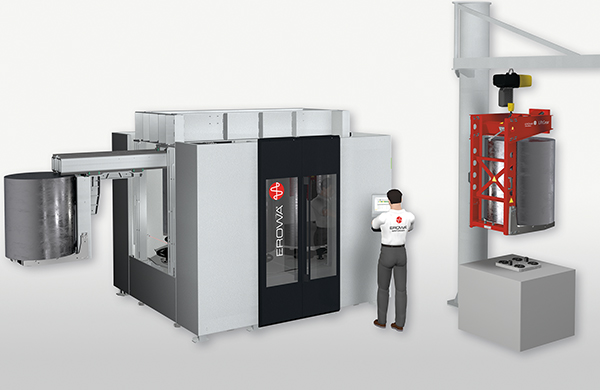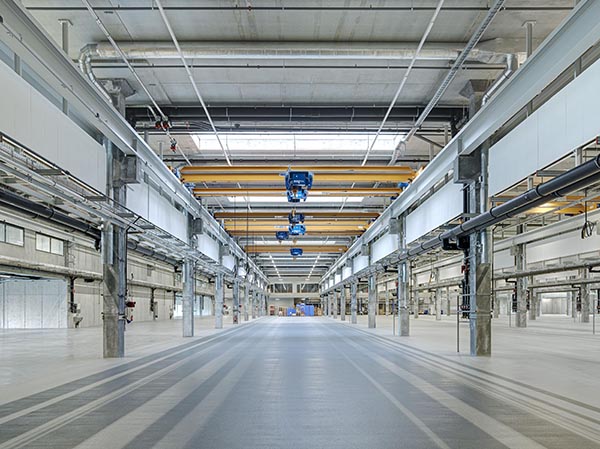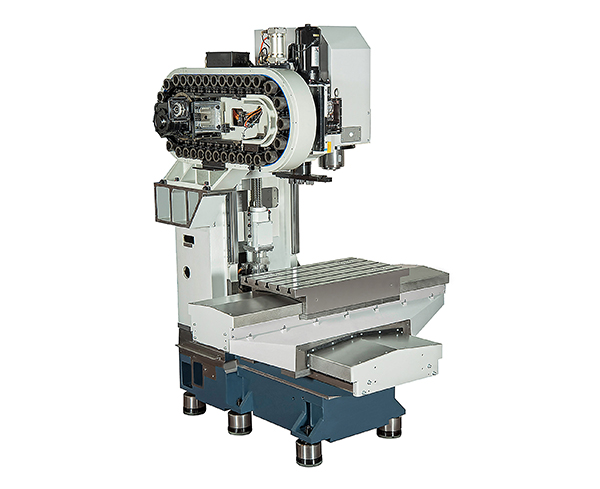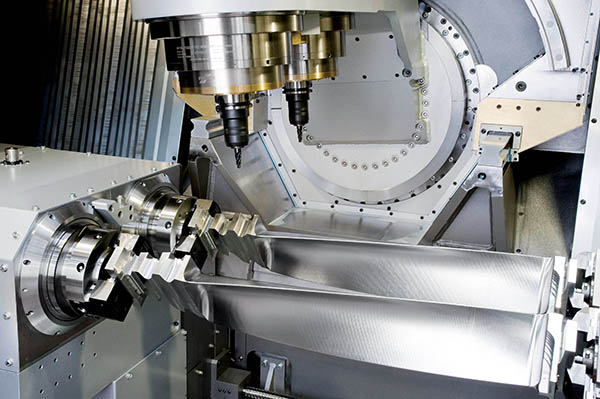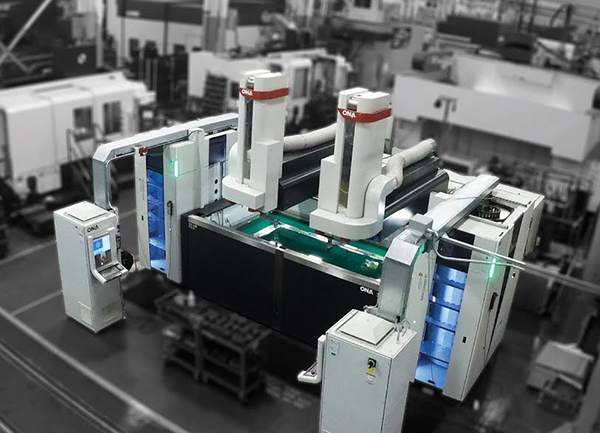At the recent EMO 2019 exhibition in Hanover, visitors were able to see the new Erowa Robot Easy 800, an automated system that has been designed to open up new possibilities in machine loading.

With this robot, parts up to 850 mm diameter by 1000 mm long, with a maximum weight of 800 kg, can be reliably delivered to the machine tool’s working envelope. UK availability is via REM Systems.
With a wealth of experience based around this technology, Erowa knows that maintaining the high productivity of an automated system also means that ergonomics need to be taken into account. A central set-up station with a swivel crane assists the operator’s daily work considerably. Here, rotatable magazine plates simplify set-up and preparation, while pre-centring facilitates
pallet positioning with crane and lift gear.
The stable transfer axis of the robot has a large travel of 3200 mm, and can be used to load machine tables between 765 and 1200 mm. As a result, there is sufficient space for an operator to manually set up work at the machine table, if there is a need to ‘break into’ the production run or some special fixturing is required, for example. The magazine has a loading capacity of 6400 kg within a compact 9 sq m footprint.
All of the data required for the production cell is available at a glance, including worklist, magazine loading, tool availability and priorities, via the Erowa process control system.
For further information https://remsystems.co.uk/







